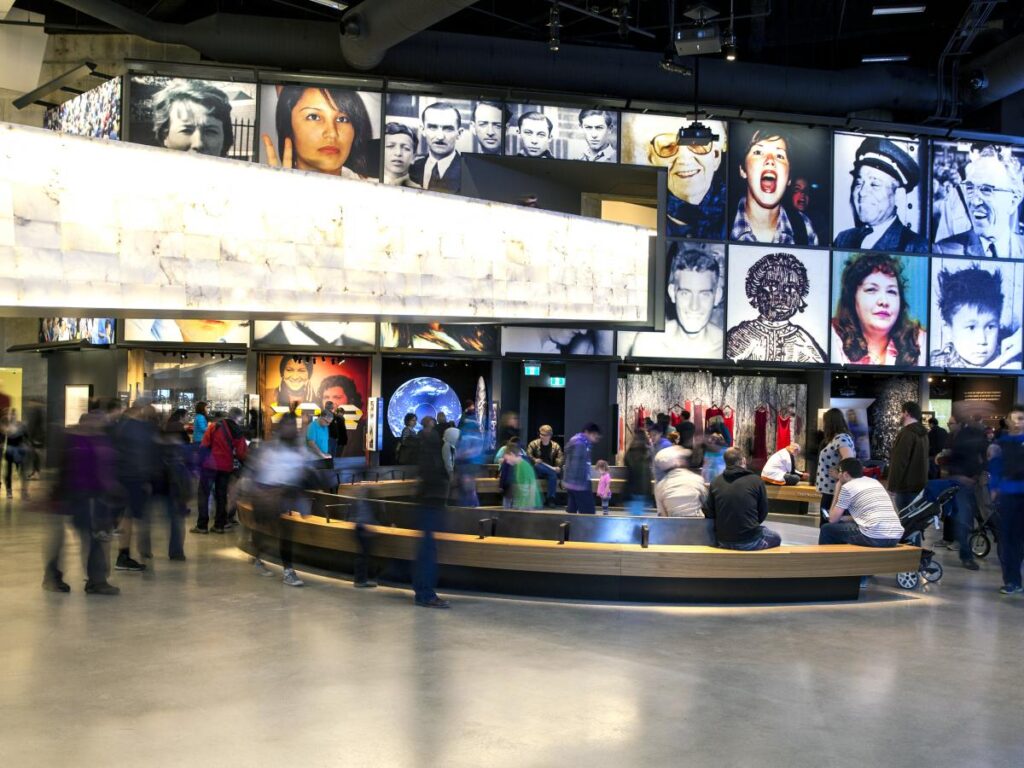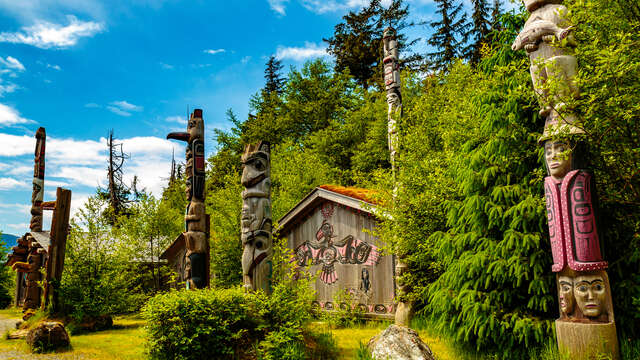In my search for circumpolar north museums to compare/contrast with an Alaskan museum I find the Canadian Museum for Human Rights remarkably interesting. From what I can tell, they don’t have a mission statement rather a mandate that works the same way a mission statement does. Their mandate is to, “…explore the subject of human rights, with special but not exclusive reference to Canada, in order to enhance the public’s understanding of human rights, to promote respect for others, and to encourage reflection and dialogue.” The museum is all about preserving and promoting Canadian heritage, contribution to the collective memory and sense of identity; and being a source for research, learning and inspiration to Canadians. Pretty cool mandate. Just the idea that a museum dedicated to Human Rights makes me happy. They also have a set of guiding principles listed on their website: “Be sustainable”, meaning to ensure the mandate extends to future generations; “Be relevant”, meaning they will be a trusted sources for human rights content and information; and “Grow engagement”, meaning they will expand their outreach towards their visitors. Some of they exhibitions they have listed on their website are “ARTiculate Our Rights” (July 2021 to May 2023); “Ododo Wa: Stories of Girls in War” (Oct 2019 to Nov 2023); and “Climate Justice” (June 2022 to June 2024).

The other museum I chose to explore for this assignment is the Totem Bight State Historical Park in Ketchikan, Alaska. I chose this one because it is on my bucket list of museum and sites to visit thus this is an excellent opportunity to learn more about it. Well first things first, this is an Alaskan state-run museum so they don’t have their own website rather links to their brochure can be found online. The use the term, “Silent Storytellers” to identify the fourteen Tlingit and Haida totem poles in the 11-acre park. They have tour guides for visitors as well as printable guide for exploring the park and interpreting the totems. They also say that the tradition of carving totem poles is carried on by elder Tlingit and Haida carvers. Constructing the park began in 1938 by the U.S. Forest Service and was initially funded by the Civilian Conservation Corp. In 1970, Totem Bight was added to the National Register of Historic Places.

These two museums are so much different than one another, mainly because of their subject matter. The Canadian Museum for Human Rights deals with an intangible subject matter whereas, Totem Bight State Historical Park is a place where one can see, touch and I imagine able to smell the cedar. Both museums focus in on engaging and preserving aspects of humanness and cultural heritage that instills a sense of pride for their respective communities. I think it pretty cool that both of the museums have a spatiality component that allows for visitors to move freely through the spaces.
My question is, what is the coolest or your favorite museum you explored this semester?
I think one of the more interesting museums that I explored as part of this class was the international Seed Vault in Sweden. I had never heard of it before and became fascinated with it. It’s a museum that nobody can go to. Which makes me wonder, does an institution need to have visitors in order to be considered a museum?